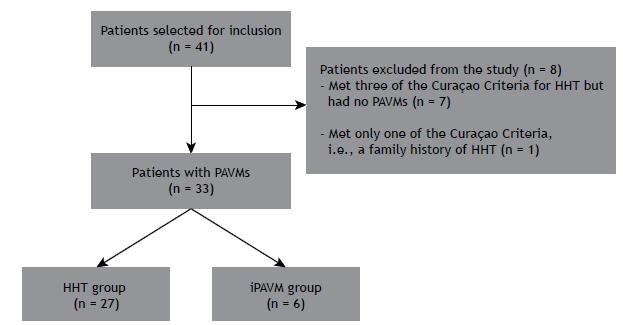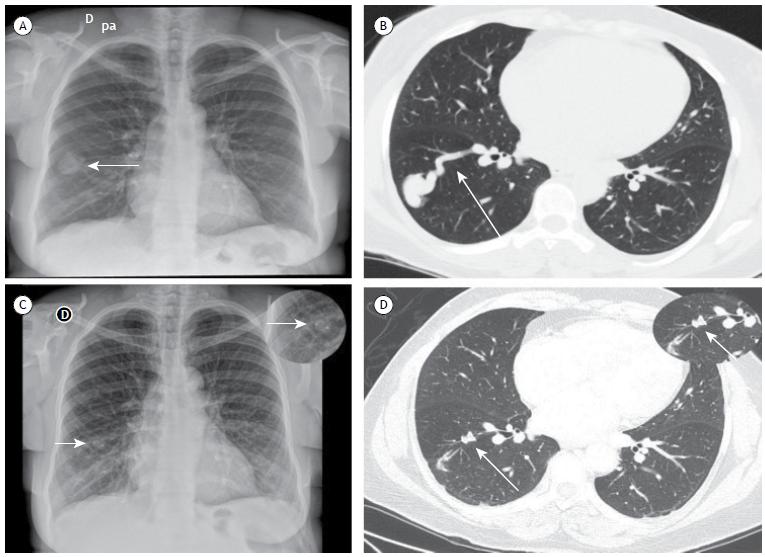ABSTRACT
Objective:
To present a case series of pulmonary arteriovenous malformations (PAVMs), describing the main clinical findings, the number/location of pulmonary vascular abnormalities, the clinical complications, and the treatment administered.
Methods:
This was a retrospective observational study evaluating patients with PAVM divided into two groups: hereditary hemorrhagic telangiectasia (HHT); and idiopathic PAVM (iPAVM).
Results:
A total of 41 patients were selected for inclusion, but only 33 had PAVMs. After clinical evaluation, 27 and 6 were diagnosed with HHT and iPAVM, respectively. In the HHT group, the mean age was 49.6 years and 88.9% were female. In that group, 4 patients had an SpO2 of < 90% and the most common clinical finding was epistaxis. In the iPAVM group, the mean age was 48.1 years and 83.3% were female. In that group, 3 patients had an SpO2 of < 90%. Computed tomographic pulmonary angiography showed that most of the PAVMs were in the lower lobes: 56.4% in the HHT group and 85.7% in the iPAVM group. Embolization was performed in 23 patients (in both groups). At this writing, 10 patients are scheduled to undergo the procedure. One of the patients who underwent embolization was subsequently referred for pulmonary resection.
Conclusions:
In both of the PAVM groups, there was a predominance of women and of fistulas located in the lower lobes. Few of the patients had respiratory symptoms, and most had an SpO2 > 90%. The treatment chosen for all patients was percutaneous transcatheter embolization.
Keywords:
Telangiectasia, hereditary hemorrhagic; Arteriovenous malformations/diagnosis; Arteriovenous malformations/therapy





